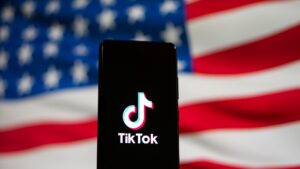When it comes to getting an advertising model for brands or businesses. Entrepreneurs or business owners worry about what model they should go for. There are two very famous pricing models in the world of digital marketing which are CPM and CPC. Each of them has its own pros and cons. If you are also going through the problem of looking for the right advertising model, you may need to contact a reputable Houston SEO company to save you the stress of advertising. If you also want to learn more about CPM and CPC, you need to read through our post and we would put you through it. Further, we have to define these types of advertising models
What Is CPM
CPM is an abbreviation for cost per mile and it is one of the numerous pricing models on paid advertising where pay a price for every 1000 impressions on a particular advert. This is a typical pricing model for big brands that have so many affiliate networks. CPM type of advertising when compared to others is relatively less expensive, except in cases where you want more people, hence you have to bid higher.
What Is CPC
CPC is an abbreviation for cost per click and is also called per click. It is a type of advertising in which brands and business owners pay for every click their adverts get. This better determines the cost of showing ads on search engines. A variety of ads use CPC to determine their total cost of ad spent.
Difference Between CPM and CPC
The cost-per-click type of advertising is for those that have a specific amount to bid and hence they are open to driving traffic to their website for that specific amount. You either set up for automatic bidding in which Google works with the certain amount of money you put in daily so as to get a specific amount of clicks for your set budget. Another option is that you pay whenever anyone clicks on your website. Here, you have control over the number of clicks you get.
When all you want to do is build awareness of your new website, you can do this because it charges you per one thousand impressions. This doesn’t guarantee that one of your target audience would click on your site. So, in cases like this, you may have a thousand impressions but no clicks. Well, it also has a good side. When you bid a higher price for a CPM are sure that your website would end up ranking number 1. This type of advertising just guarantees you the number 1 spot without judging for relevance or authority. While it occupies the number 1 spot Pearland SEO expert says it may eventually generate more clicks from your target audience who may find your website interesting.
How To Calculate CPM and CPC
CPM and CPC are calculated differently and there is nothing hard about it.
For CPM, there is a flat rate fee for every 1000 times that your ad is shown. So it can easily be calculated. If your charge is $10 for every 1000 impressions. When it gets to 15,000 impressions you will pay a total of $150
CPC is calculated by each click the brand gets. The pricing is determined by site owners who are in charge of setting the fee. Let professional Pearland SEO workers help you determine how much advertising your website or brand requires in order to generate both website traffic as well as conversion.
The Right Model For You
This is solely dependent on your business goals. If you want to get your business to the front page and in front of a large crowd, then you can go for CPM. While, if you are selling any product and want people to look through or patronize you, you can go for CPC.
You can also use CPM when you are selling a product. For example, if you are selling a costly product and you are not sure many people would want to buy it because of the price attached, you can use CPM advertising to get your product in front of so many people. At least, the chances of it converting would be greater.
Conclusion
Each type of advertising model comes with its advantages and disadvantages. When it comes to choosing one for your business you need to know if you are seeking awareness, traffic, or sales.





